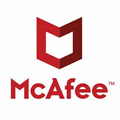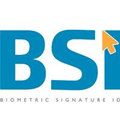Online Gamers Risk Credit Card Fraud
The Sony Corporation has been providing consumers with stellar electronics since before the introduction of the Walkman. The past six months have been harsher for Sony, with attacks by hacktivists and numerous breaches of clients’ data.
Many recent breaches involved usernames, passwords, email addresses, and in some cases, credit card numbers. Each compromised data point is another opportunity for a criminal to steal your identity and make money at the expense of your good name.
If a company becomes aware that usernames and passwords have been compromised, they should notify users and prompt them to change their passwords. Users should change passwords every six months, regardless of whether a breach has occurred. Passwords should include upper and lowercase letters and numbers, and should not be used across two or more accounts. I have 700 different accounts and 700 different passwords.
Beware of spear phishing emails. When hackers get your email address from a breached gaming account, they will send emails that look like they are coming from the company that has been breached. Never click on links within an email. Instead, go to your favorites menu or manually type the correct address in the address bar.
Pay close attention to credit card accounts. I monitor my accounts weekly for all activity. Simply log in, look at each charge, and refute unauthorized charges immediately. A new free service called BillGuard scans your credit cards daily and alerts you to hidden fees, billing errors, forgotten subscriptions, scams, and fraud.
If you have provided a credit card number to your child for online gaming, beware of purchases they may make that you have previously approved. Many gaming sites try to upsell their users, and will charge the credit card on file. Spend some time with your child discussing appropriate online behavior, and look for parental controls that will send you email alerts when your child makes a purchase.
McAfee, the most trusted name in digital security, includes proactive identity surveillance to monitor subscribers’ credit and personal information, as well as access to live agents who can help subscribers resolve identity theft issues. For additional tips, please visit CounterIdentityTheft.com.
Robert Siciliano is a McAfee consultant and identity theft expert. See him explain how a person becomes an identity theft victim on CounterIdentityTheft.com (Disclosures)




























